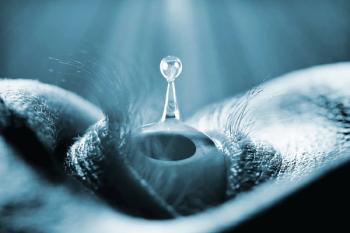
Which is better: one or two?
Answering the question: “Which is better, one or two?" can lead to some confusion on the patient’s part.
There is a standard line in our profession: “Which is better, one or two?”
This usually refers to the optometrist refining the cylinder axis and power by flipping the Jackson cross-cylinder lens and asking the patient which of the two lens choices improves his vision, hence the question: “Which is better, one or two?”
Dr. BowlingI’ve found over the course of my career that this choice, while meant to improve the patient’s vision, can also lead to some confusion on the patient’s part. I used to use only “choice 1 or choice 2,” but have modified that option to include the alphabet, Disney characters, movie star names, cars, and anything else that might grab the patient’s attention. I found that when I taught optometry, students droned on monotonically: “Which… is… better… one…or …two?”
Listening to them drove me crazy. So I always recall this story:
Once upon a time, when I was in private practice in Georgia, I had a very nice little old lady, Mrs. Smith, present for an eye exam. Mrs. Smith’s refraction was especially difficult, partially because of her cataracts and especially because of her habitual indecision. After much effort and way too much time, we managed to get through the refraction, and the rest of the exam proceeded smoothly.
Later that night, I was sitting at home watching a football game when the phone rang.
“Hello?” I answered.
“Dr. Bowling?”
“Yes.”
“It’s Mrs. Smith from the office today. Do you remember me?”
“Why, yes, Mrs. Smith. How could I forget you?” That was the truth. “What can I do for you this evening?”
“Well, Doctor, I’ve been thinking. Today, you kept asking me which was better-one or two. I kept telling you one. But now, the more I think about it, I’m certain it was two.”
“Thank you for telling me that, Mrs. Smith. I’ll make the necessary changes to your record in the morning.”
“Well, OK,Dr. Bowling. I was certain you’d want to know.”
“That was sweet of you to call, Mrs. Smith. Thank you.”
I’ve never used that particular combination of choices since.
Newsletter
Want more insights like this? Subscribe to Optometry Times and get clinical pearls and practice tips delivered straight to your inbox.














































.png)


